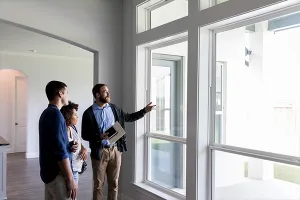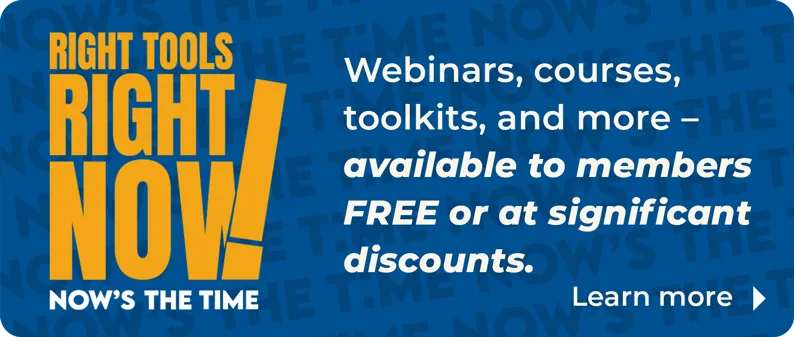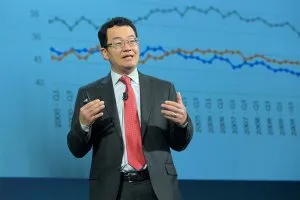If you want to positively influence the way consumers think about buying a home—and how they perceive Realtors®—you have to talk to them directly. At least that’s what some associations have decided. That’s why they’ve created programs that educate consumers about home buying, the real estate market, and the role of Realtors®. Here, the experts tell you how they’ve reached out to consumers and boosted their members’ image in the process.
Why Educate Consumers?
Since 2002, the Santa Clara County Association of Realtors® in San Jose, Calif., has co-sponsored an annual affordable housing fair in conjunction with the city of San Jose and the local newspaper, the San Jose Mercury News. The fair—free to the public—features tabletop exhibit space for businesses and government agencies, along with seminars on such topics as how to purchase a home and how to correct your credit. Each seminar is offered in Spanish, Chinese, Vietnamese, and Tagalog, the native language of the Philippines.
According to Paul Stewart, the association’s former executive director and vice president of legislative affairs, the fair has several goals. Primary among them is educating consumers about all forms of housing opportunity. In the expensive San Jose market, Stewart says, “people get discouraged when they see home prices, and they don’t equate homeownership with condos and townhouses, which are typically less expensive.”
The association works with government and private agencies to educate attendees about affordable housing programs. “We want to show consumers there’s housing they can afford and there’s also assistance to help them get into that housing,” he says.
Beyond teaching attendees about housing, the fair is a great venue for showcasing
the value Realtors® bring to their community. “We’re highly involved in the communities we serve,” Stewart notes, “and this is just another way of reaching out to consumers and saying that, next to the police department, Realtors® are in the market more than anybody else. They know the market, and they know how to keep it vital.”
The Northeast Florida Association of Realtors® in Jacksonville, Fla., offers a similar program called the Home Buyers’ Expo. “Part of our mission is to educate the public in a neutral setting,” says CEO William Glenn East, cae, rce. The expo is free to the public and features 18 seminars, some offered in both English and Spanish,
and 50 expo booths. It also includes a drawing for a $3,000 certificate that can be used toward a down payment on a home. The association co-sponsors the event with its local newspaper, the Florida Times Union.
The expo promotes Realtors® as professionals, East says, and it promotes individual members who operate a booth or teach a course. “It also allows members to get involved and to meet the public,” says East.
Children Are the Future Buyers
To begin creating a positive association with Realtors® at an early age, the Colorado Association of Realtors® in Englewood, Colo., offers a free workbook and course to high school students called “It’s Your Move.” The program educates high school juniors and seniors about financial issues, such as budgeting and the importance of maintaining good credit, says Tyrone Adams, CAR’s communications and events director.
Students start with lessons on renting their first apartment. “We tell them the rights and responsibilities of tenants and landlords,” Adams says. The program goes on to discuss the importance of homeownership and answer such questions as, “Will I be able to own a home myself? What are the costs? What’s realistic?” Each student gets a workbook; there’s also an instructor’s edition with suggested activities and projects.
CAR notifies school administrators about the program and encourages local associations and individual members to offer it in their area schools. Vicki Burns, broker-owner of Brass Key Realty in Craig, Colo., has been an instructor of “It’s Your Move.” She supports the program, she says, because it “makes the students more aware of the importance of using a Realtor® in a transaction.”
It also makes them more savvy real estate consumers. “These students can now read a lease, and it makes for a better business relationship,” says Burns.
“We’re educating the public, and by doing that, we help our members,” says Adams.
Covering Your Costs
Great ideas, these fairs, expos, and books—but how do you pay for them? Associations say the programs can pay for themselves. East says the NEFAR expo draws about 750–1,000 people, and the expo costs are covered by the sale of booths at the event. “The program more than breaks even—a little more,”
he says.
SCCAOR’s affordable housing fair also comes out a bit ahead, but Stewart says, “The project isn’t meant to be a revenue generator. It’s a community service, which is one of the reasons the city and newspaper join with us.” Stewart says last year the fair cost $41,000 to organize and generated about $43,000 in income.
Marketing is a key factor in the fair’s success. The city’s housing department helps promote the program, and the Mercury News runs ads for the program at no charge to the association.
“We start about three weeks before the event with a teaser ad,” Stewart says. “Then we run a larger ad. The day before the event, we run a half-page ad.” The turnout for SCCAOR’s fair has increased each year, Stewart says, starting at about 3,500 in 2002 and growing to 4,500 last year.
As for CAR’s venture, Adams says the association spends $2–$3 per workbook, for a total of about $20,000 annually. It also spends about $5,000 annually for postage and handling. The project is funded by the association’s Realtors® Education Foundation. The long-term rewards are more than worth the expense, Adams says. “We’re part of the community, and we’re giving back.”








